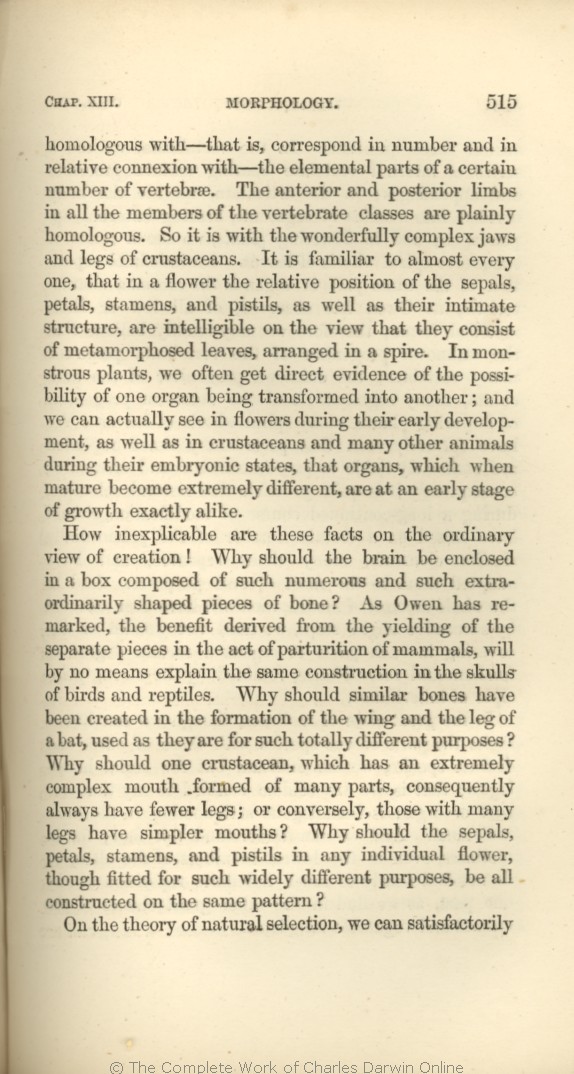homologous with— | homologous with— 1859 1860 1861 1866 1869 | | homologous— 1872 |
| is, 1866 1869 1872 | | is 1859 1860 1861 |
| connexion with— 1859 1860 1861 1866 1869 | | connexion— 1872 |
| the 1859 1860 1861 1866 1869 | | with the 1872 |
| all the members of the vertebrate 1866 |
| each member of the vertebrate and articulate 1859 1860 1861 |
| all the higher vertebrate 1869 1872 |
| So it is with 1866 1869 1872 |
| We see the same law in comparing 1859 1860 1861 |
| of 1866 1869 1872 | | in 1859 1860 1861 |
| see 1859 1860 1861 1866 | | see, 1869 1872 |
| in flowers during their early development, as well as in crustaceans and many other animals during their embryonic states, 1866 |
| in embryonic crustaceans and in many other animals, and in flowers, 1859 1860 1861 |
| during the early or embryonic stages of development in flowers, 1869 1872 |
| that 1859 1860 1861 1866 |
| as well as in crustaceans and many other animals, that 1869 1872 |
| different, 1859 1860 1861 1866 1869 | | different 1872 |
| an early stage of growth 1859 1860 1861 1866 |
| first 1869 1872 |
|
|
How inexplicable are
these facts | these facts 1859 1860 1861 1866 1869 |
| the cases of serial homologies 1872 |
| extra-ordinarily 1866 | | extraordinarily 1859 1861 1872 | | extraordinary 1860 | | extraor- dinarily 1869 |
| bone? 1859 1860 1861 1866 1869 |
| bone, apparently representing vertebræ? 1872 |
| of 1859 1860 1861 1866 1869 | | by 1872 |
| birds and reptiles. 1866 1869 1872 |
| birds. 1859 1860 1861 |
| in the formation of 1859 1860 1861 1866 |
| to form 1869 1872 |
| the leg 1866 1869 1872 | | leg 1859 1860 1861 |
| purposes? 1859 1860 1861 1866 1869 |
| purposes, namely flying and walking? 1872 |
| pistils 1859 1860 1861 1866 | | pistils, 1869 1872 |
| any individual 1859 1860 1861 1866 | | each 1869 1872 |
| widely different 1859 1860 1861 1866 1869 | | distinct 1872 |
|
|
On the theory of natural selection, we
can | can 1859 1860 1861 1866 1869 | | can, 1872 |
| satisfactorily 1859 1860 1861 1866 |
| to a certain extent, 1872 |
| OMIT 1869 |
|









